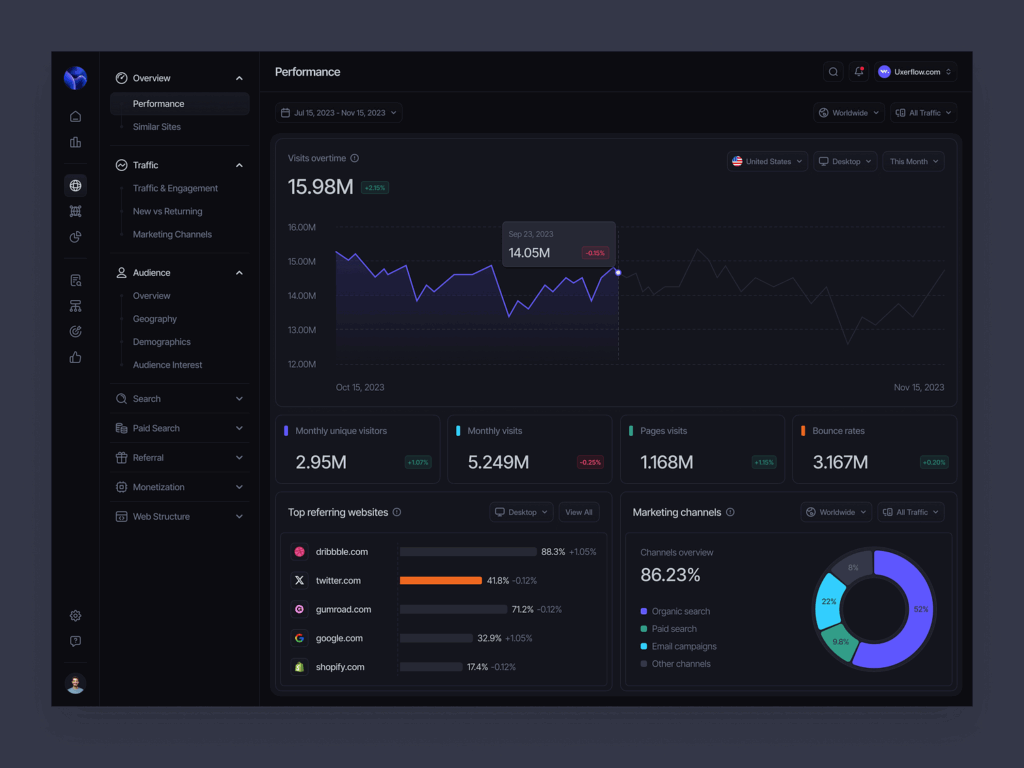In today’s world, digital strategy is not an add‑on—it’s the core of modern marketing. To remain flexible, measurable, and competitive, your marketing strategy must fully integrate digital. Let’s unpack how.
🧭 1. Digital Strategy vs. Marketing Tactics
A marketing strategy provides the high‑level vision—defining what you want to achieve and why. Your tactics, like social posts or PPC ads, are the how (blog.hubspot.com).
Digital strategy acts as the blueprint that ensures every tactic—be it email, SEO, or paid media—aligns with your goals and brand positioning .
🎯 2. Align with Business and Marketing Goals
Your digital strategy must reflect broader business objectives: increasing brand awareness, generating leads, improving retention, or boosting sales. It turns vague ambitions into SMART digital goals—for example, “Grow our LinkedIn followers by 20% in Q3 to feed the sales funnel.”
👤 3. Know Your Audience
Digital allows precise segmenting and targeting. Build buyer personas based on data, behavior, and motivations—then tailor content to each persona across channels. Analytics and CRM insights bring personalization to life (blog.hubspot.com).
📣 4. Choose the Right Channels
Evaluate your owned (website, blog), earned (social shares, PR), and paid channels (PPC, influencer marketing). Match channel choices to your audience, goals, and budget. For instance, SEO supports visibility, while influencer campaigns drive authenticity on social media .
✍️ 5. Content at the Core
Content fuels every digital touchpoint. Build your strategy around informative blog posts, whitepapers, videos, and social content that speaks to each stage of the customer journey. Track performance and pivot based on what resonates .
📊 6. Integrate Analytics and Adapt
Digital marketing gives you real-time feedback. Set KPIs for each channel and monitor continuously via platforms like Google Analytics or HubSpot. Learn what works, what doesn’t—and optimize campaigns accordingly .
🔄 7. Enhance Agility & Future-Proofing
In a regulatory landscape where platforms limit targeting, and algorithm changes are common, a strong digital strategy diversifies your tactics—leveraging owned channels like email and first‑party data to buffer volatility .
🔑 Summary Table: Where Digital Strategy Fits
| Marketing Plan Component | Role of Digital Strategy |
|---|---|
| Goals & KPIs | Translate objectives into measurable digital outcomes |
| Audience Targeting | Personas, behavior, segmentation, personalization |
| Channel Mix | Balanced owned, earned, paid footprint |
| Content Strategy | Pillars for brand voice, authority, and engagement |
| Measurement & Analytics | Ongoing tracking and optimization |
| Budget Allocation | Data-backed channel investment |
| Agility Planning | Diversification & data ownership safeguards |
Final Thoughts
A robust digital strategy is no longer optional—it’s the connective thread weaving together all your marketing efforts. From audience insights to measurement, it transforms your plan from disjointed tactics into a cohesive, agile, data‑driven powerhouse.
Share this:
- Click to share on Facebook (Opens in new window) Facebook
- Click to share on X (Opens in new window) X
- Click to share on LinkedIn (Opens in new window) LinkedIn
- Click to share on Reddit (Opens in new window) Reddit
- Click to share on Pinterest (Opens in new window) Pinterest
- Click to share on Pocket (Opens in new window) Pocket
- Click to share on WhatsApp (Opens in new window) WhatsApp
- Click to email a link to a friend (Opens in new window) Email



